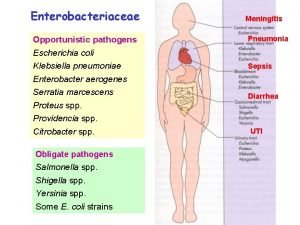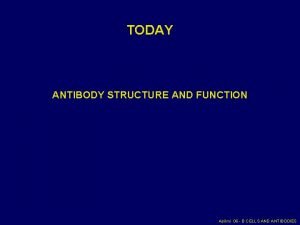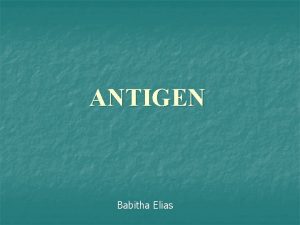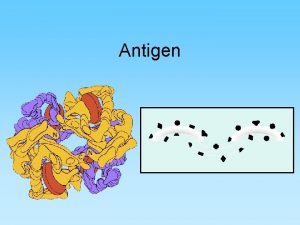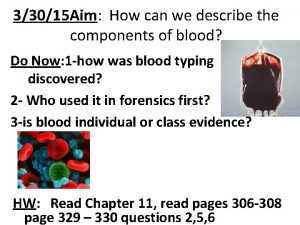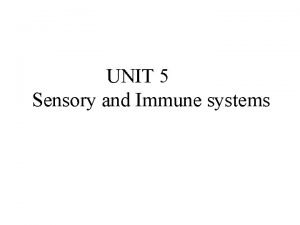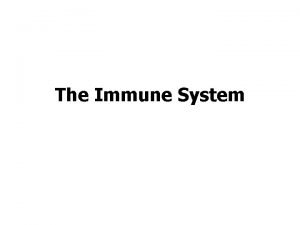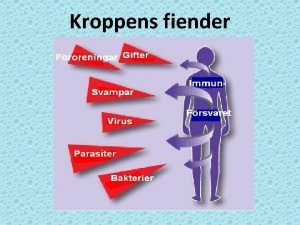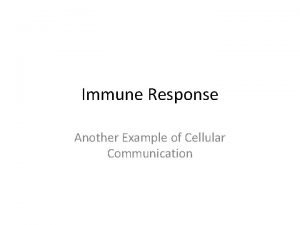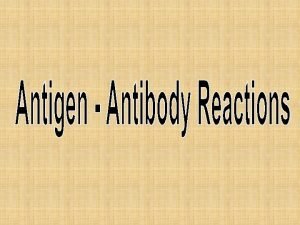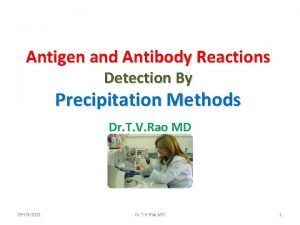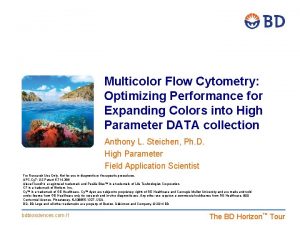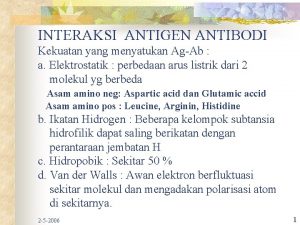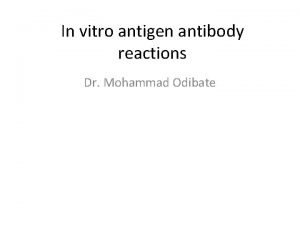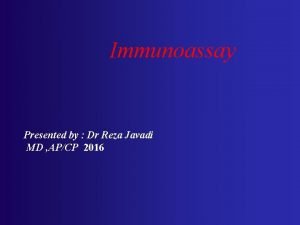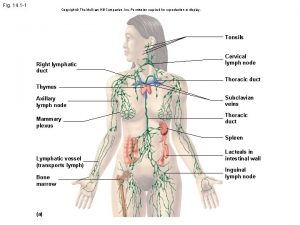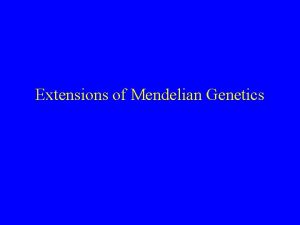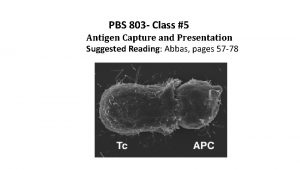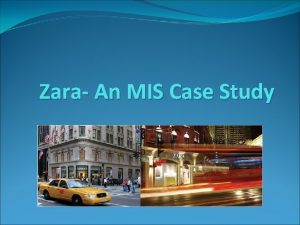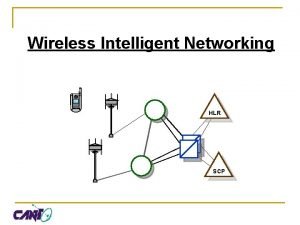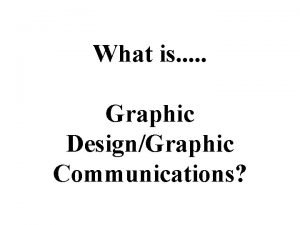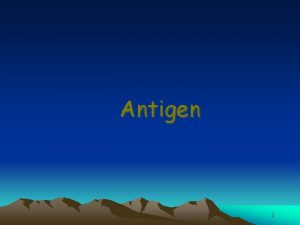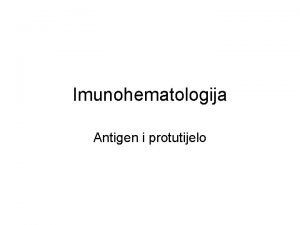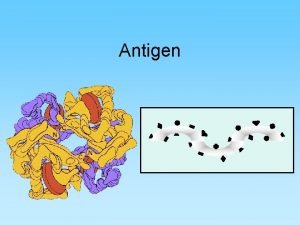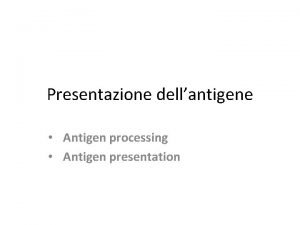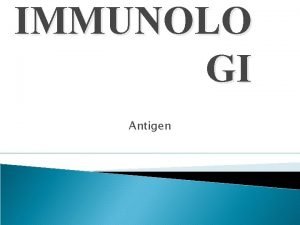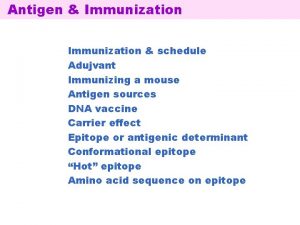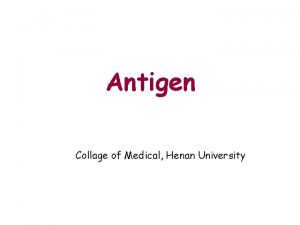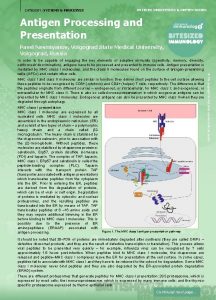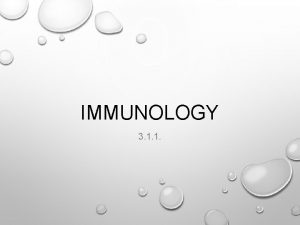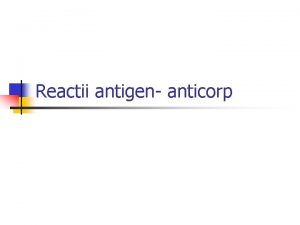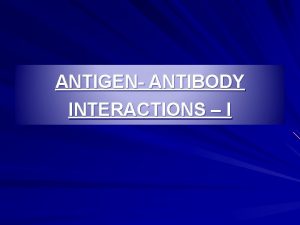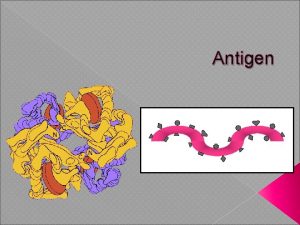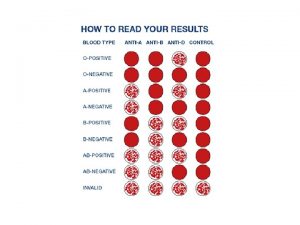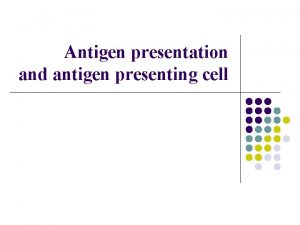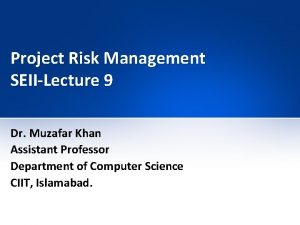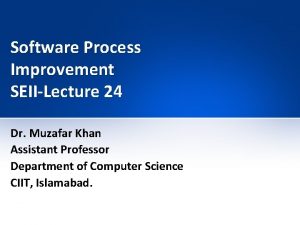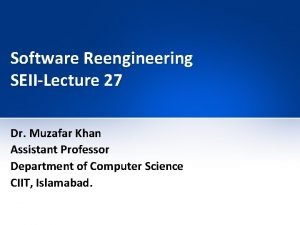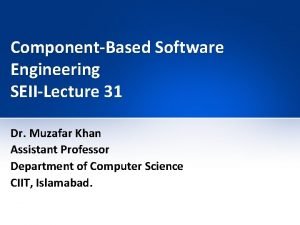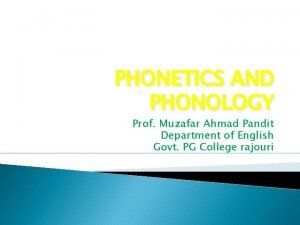ANTIGEN 21 2 15 Dr Muzafar DEFINITION Any



























- Slides: 27

ANTIGEN 21 -2 -15 Dr Muzafar

DEFINITION • Any substance which, when introduced in body, evokes immune response with the production of specific antibody with which it reacts specifically in an observable manner.

• Immunogenicity is the ability to induce a humoral and/or cell-mediated immune response. • Antigenicity is the ability to combine specifically with the final products of the immune response (i. e. secreted antibodies and/or surface receptors on T-cells). Although all immunogenic molecules are also antigenic, the reverse is not true.

• An immunogen is able to initiate an indispensable innate immune response first, later leading to the activation of the adaptive immune response. • whereas an antigen is able to bind the highly variable immunoreceptor products (B-cell receptor or T-cell receptor) once these have been generated previously.

TYPES OF ANTIGEN 1. Complete antigen/ immunogen: This term is used for substances which possess antigenic properties de novo i. e, they are able to generate an immune response by themselves. such antigens induces antibody production and produces a specific and observable reaction with Ab so produced.

• These are high molecular weight proteins/ polysaccharides( > 10, 000 daltons). 2. Hapten/ Incomplete antigen: • Hapten means grasp, , , is a low molecular weight( < 10000 daltons), usually non-protein substance, unable to induce an immune response by itself but hapten can become immunogenic only when covalently linked to proteins(carrier). • Carrier may be serum protein such as albumin

or globulin or synthetic polypeptide. • Many simple chemicals and drugs act as haptens. • Haptens are of two types. . . a. Complex. . . . relatively large molecules and combine with specific antibodies forming visible precipitate e. g, capsular polysaccharide of pneunococci, cardiolipin. b. Simple hapten. . . . are relatively low molecular weight simple chemical substances.

Simple hapten are thought to have univalent character. Examples. . . . I. Drugs and chemicals. . . . causing allergic contact dermatitis and drug hypersensitivity. II. Blood group (ABO) substances: Glycoproteins. III. Lipids. . . Forssman, transplantation antigens. 3. Proantigen: Substances of low molecular weight that do

not induce formation of antibody but can cause delayed hypersensitivity e. g, dinitrochlorobenzene. 4. Heterophile(heterogenic) antigen: • Certain antigens of similar nature, if not identical, present in different tissues of more than one species are called heterophile antigens. • Antibody to these closely related antigens produced by one species cross-react with

antigens of other species. • Composition. . . chemically these are lipoprotein polysaccharide complex. • Examples: . Forssman antigen. . . it is lipoproteinpolysaccharide complex, first described by Forssman(1911), who observed that injection of guinea pig tissue into rabbits stimulated production of a hemolysin for sheep red cells. It is present in red cells and other tissues of

many animals. . Red cells/ other tissues Bacteria Horse St. pneumoniae Cat Shigella Mouse Pasteurella Cross-reacting microbial antigens: • The C 1 portions of light chains of various immunoglobulin classes contain common antigenic determinants which allow them to be recognised by same antibodies( e. g, cardiac

damage in rheumatic disease). Antigen Sharing antigen Blood group B subst E. coli -ances Myocardial, endocardial Cell surface antig valvular heart tissues, -ens of group A β Human kidney tissues heamolytic strep -tococci.

Antigenic determinant: • The whole antigen does not evoke immune response and only a small part of it induces B and T cell response. • The small area( usually 5 aminoacids or sugars in size) on Ag molecule that determines specific immune response and reacts specifically with a single antibody molecule is called an antigenic determinant or epitope. • The combining area on the antibody molecule

corresponding to epitope is called as Paratope. • Antigen can possess one or more determinants(epitope) which differ in potency and specificity. • Each epitope is about 25 -34 A in size, 4001000 Da M. W. • Antigenic property of a molecule is lost by denaturation of proteins. • The number of epitopes of an Ag is reffered to as its valency.

Factors determining antigenicity: 1. Foreigness: 2. Size: Large molecules like haemocyanin(6. 75 million Da) and other products with M. W > 14000( e. g, egg albumin, T. Toxoid) are highly antigenic. Substances less than 1000 Da e. g, insulin are weak antigenic. Substances with M. W less than 5000 are non -antigenic or feebly antigenic.

Such substances with low M. W may be rendered antigenic by adsorbing the same on large inert particles like bentonite or kaolin. 3. Chemical nature: Naturally occuring antigens are mainly proteins. Polysaccharides are best immunogens. Carbohydrates are weaker antigens. Lipids and Nucleic acids are poor antigens and their antigenicity is enhanced by combination with larger molecules of proteins.

4. Susceptibility to tissue enzymes: • Substances which can be metabolised and can be converted to soluble forms by action of tissue enzymes can only act as good antigens. • Antigens introduced in body are degraded by digestive enzymes of phagocytic cells and are broken down into smaller fragments of appropriate size containing antigenic determinants. • Macromolecules that can’t be degraded and

presented with MHC molecule are poor immunogens. • Substances that are insoluble in body fluid and not metabolised in body e. g, synthetic polypeptides composed of D-aminoacids are not antigenic while polypeptides made of Laminoacids are antigenic. 5. Antigenic specificity: • It depends on specific active sites on antigenic molecules( antigenic determinant).

• Remaining portion of antigenic molecule is antigenically inert. • From studies of Karl Landsteiner it was concluded that specificity depends on. . . I. Acid and base groups. II. Spatial configuration of haptens III. Terminal groups in an antigen. • The antigens are multivalent and large antigens possess hundereds of different determinant groups.

• Each type of determinant induces formation of a specific antibody. • The number of determinants vary with size of antigen e. g, Myoblobin(M. W 17000 Da) has 5, lysozyme (M. W 14000 Da) has 2 distinct antigenic determinants. • It should be noted that antigenic specificity is not absolute and cross reactions may occur between antigens due to (i) sterochemical similarity, and (ii) sharing of antigenic determinants by different antigens.

6. Species specificity: • Tissues of all individuals in a particular species possess species specific antigen. • It has been used to trace evolutionary relationship between species. • Forensic application. . to trace blood and seminal stains. • A man sensitised with horse serum will react with serum of other horses but not with sheep serum.

7. Isospecificity: • Isoantigens are found to be present in some but not all members of species which are able to produce isoantibodies in individuals who are free from antigens e. . g. , (i) Human erythrocyte and Rh antigen. . . (ABO) blood group. (ii) Histocompatibility antigen. . . . although these are species specific antigens, there exists difference between individual members

members of same species so that transfer of tissue cells between members induce immune reaction. These are known as histocompatiblity antigens which are associated with plasma membranes of tissue cells including leucocytes. . 8. Organ specificity: • Some organs like brain, kidney and lens protein of one species share same antigen with that of another species.

Significance. . . . Since brain specific antigens are shared by sheep and human beings, there may be neuroparalytic complications following antirabies vaccination using sheep brain vaccine. 9. Autospecificity: • Self-antigens are ordinarily not immunogenic but under certain circumtances e. g. , lens protein(normally confined within capsule), thyroglobulin(normally confined within acinus) may act as autoantigen.

• Antigens that are absent during embryonic life and develop thereafter e. g. , sperm are also recognised as foreign or non-self antigens. Biological classes of antigens. • There are two types of antigens based on their ability to induce antibody formation: 1. Thymus dependent antigens. B lymphocytes are responsible for production of antibody. In case of most antigens cooperation of T lymphocytes is

necessary for antibody production and are reffered as TD antigens. • Thymus independent antigens. Those antigens which can directly stimulate B cells to produce antibody without direct participation of TH cell are called TI antigens.

Q. What is an antigen? Discuss briefly the various factors of antigenicity? Q. Write short note on antigen specificity? Q. Write short note on hapten? Q. Write short note on immunogen?
 E coli treatment
E coli treatment Antibody
Antibody Hapten definition
Hapten definition Antigens characteristics
Antigens characteristics Blood type chart
Blood type chart Non-self antigen
Non-self antigen Immune defintion
Immune defintion Antigen-antikroppsreaktion
Antigen-antikroppsreaktion Cell response
Cell response Antigen antibody
Antigen antibody Antigen antibody
Antigen antibody Nature of antibody
Nature of antibody Cd antigen
Cd antigen Interaksi antigen antibodi
Interaksi antigen antibodi What is antigen in blood
What is antigen in blood Reza curtmola
Reza curtmola Immunity definition
Immunity definition Antigen binding site
Antigen binding site Mendelian
Mendelian Mhc ii antigen presentation
Mhc ii antigen presentation There are some pasta
There are some pasta Any to any connectivity
Any to any connectivity Informational probes adalah
Informational probes adalah Zara mis
Zara mis Five sentence paragraph example
Five sentence paragraph example Wireless intelligent networking
Wireless intelligent networking I didn't do my homework last night
I didn't do my homework last night Is any return of graphic communication on the package
Is any return of graphic communication on the package
